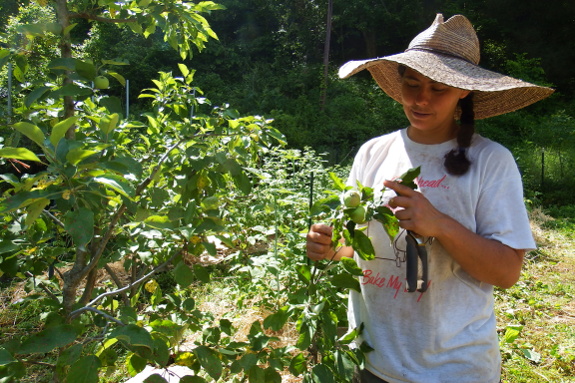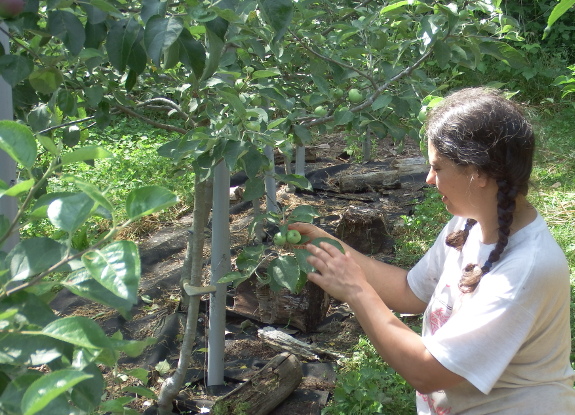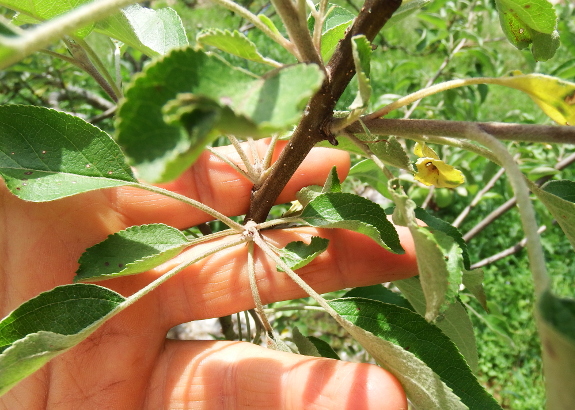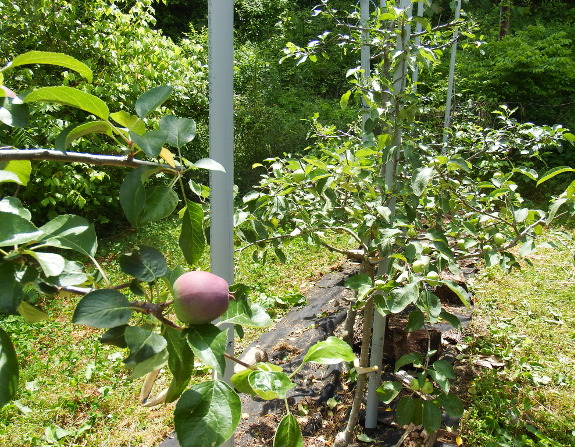
High-density apple summer pruning

I'm learning more and
more about apple pruning with each year that goes by. This week, for
example, I learned the hard way not to prune bearing trees while
wearing a hat. Yep, that peripheral vision is essential to prevent me
from cutting off baby fruits!

More seriously, I'm also
starting to fully understand some of the high-density
apple pruning advice
that I'd been merely following by rote in previous years. For example,
I'd broken the rules and let my limbs get a little longer than is
recommended. But now I realize that those longer limbs are going to be
in danger of breaking under the weight of developing fruits! For this
year, I'll depend on Mark's careful touch to tie them up without losing
the apples, but wherever I can I'm not whacking back limbs so they end
much closer to the main trunk.

I also had a minor
epiphany that relates to Michael
Phillips' comment that apple trees decide whether a spot is going
to fruit or not in June of the previous year. "How does he know that?"
I thought while reading his excellent book. Now I realize he simply
used his eyes.
Yep, those two clusters of leaves atop my fingers are flower spurs
while the next two buds up the branch turned into vegetative growth
(new long stems). In my high-density grove, I'm whacking back long
stems just past the new flower spurs to keep next year's fruits while
preventing the gangly limb sydrome I mentioned previously.

Here's our oldest
high-density row post-pruning. I'll admit that the trees do look pretty shorn. But
hopefully that severe summer pruning will keep the trees small and
productive so we wind up with even more apples next year.
Want more in-depth information? Browse through our books.
Or explore more posts by date or by subject.
About us: Anna Hess and Mark Hamilton spent over a decade living self-sufficiently in the mountains of Virginia before moving north to start over from scratch in the foothills of Ohio. They've experimented with permaculture, no-till gardening, trailersteading, home-based microbusinesses and much more, writing about their adventures in both blogs and books.
Want to be notified when new comments are posted on this page? Click on the RSS button after you add a comment to subscribe to the comment feed, or simply check the box beside "email replies to me" while writing your comment.

"Now I realize he simply used his eyes." --Anna
"It's amazing how much you can observe by just watching." --Yogi Berra
Anna, you two seem to put so much effort into your highly managed orchard plot. What are the advantages of that effort vs just letting apple trees grow without interference?